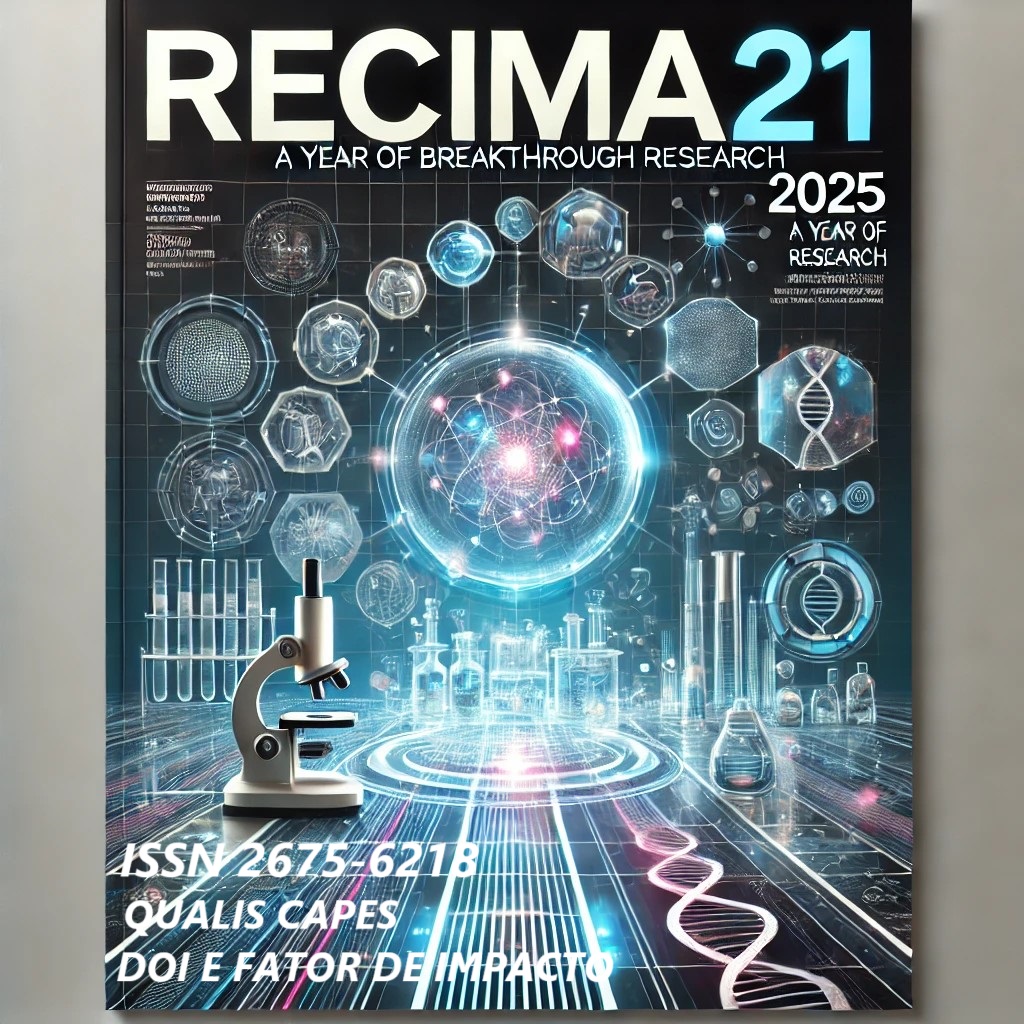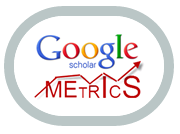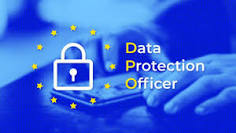AUTISMO E INTELIGENCIA ARTIFICIAL: UN ESTUDIO BASADO EN LAS LEYES DE LOTKA, BRADFORD Y ZIPF
DOI:
https://doi.org/10.47820/recima21.v6i3.6226Palabras clave:
Autismo. Inteligencia Artificial. Machine Learning. Análisis bibliométrico.Resumen
Este estudio tiene como objetivo aplicar las leyes de la bibliometría para investigar la distribución de la producción científica sobre Autismo e Inteligencia Artificial e identificar las fuentes más relevantes y la concentración de publicaciones, y obtener información sobre la productividad de los autores en esta área. Para este propósito, se utilizaron las leyes de Lotka, Bradford y Zipf para analizar la producción científica en dos bases de datos, Scopus y Web of Science (WoS). Los resultados indican que la producción científica sobre el uso de la Inteligencia Artificial y el autismo ha crecido en los últimos años, siendo un número limitado de investigadores en el campo de la informática los que producen la mayoría de los artículos. Las principales palabras clave relacionadas con el tema incluyen “autismo”, “inteligencia artificial”, “diagnóstico” y “tratamiento”. Además, el análisis bibliométrico reveló que la mayoría de los artículos fueron publicados en revistas de alto impacto en las áreas de informática y medicina. De esta manera, se puede resaltar la importancia de los enfoques interdisciplinarios para comprender mejor el TEA y desarrollar soluciones efectivas para el diagnóstico y el tratamiento. Sin embargo, el estudio presenta algunas limitaciones, como que el análisis bibliométrico no permite evaluar la calidad de los artículos incluidos en la muestra, solo la cantidad. Además, el análisis se centró principalmente en la producción científica sobre el tema, sin evaluar la implementación práctica de la IA en el diagnóstico y tratamiento del TEA.
Descargas
Referencias
AGLINSKAS, A.; HARTSHORNE, J. K.; ANZELLOTTI, S. Contrastive machine learning reveals the structure of neuroanatomical variation within autism. Science, v. 376, n. 6597, p. 1070-1074, 2022. DOI: 10.1126/science.abm2461 DOI: https://doi.org/10.1126/science.abm2461
AMERICAN PSYCHIATRIC ASSOCIATION (APA). Manual diagnóstico e estatístico de transtornos mentais: DSM-5-TR. 5.ed. rev. Porto Alegre: Artmed, 2023.
BONE, D.; GOODWIN, M. S.; BLACK, M. P.; LEE, C. C.; AUDHKHASI, K.; NARAYANAN, S. Applying machine learning to facilitate autism diagnostics: pitfalls and promises. Journal of autism and developmental disorders, v. 45, p. 1121-1136, 2015. DOI 10.1007/s10803-014-2268-6 DOI: https://doi.org/10.1007/s10803-014-2268-6
BZDOK, D.; MEYER-LINDENBERG, A. Machine learning for precision psychiatry: opportunities and challenges. Biological Psychiatry: Cognitive Neuroscience and Neuroimaging, v. 3, n. 3, p. 223-230, 2018. https://doi.org/10.1016/j.bpsc.2017.11.007 DOI: https://doi.org/10.1016/j.bpsc.2017.11.007
CAVACO, N. Reabilitação neuropsicológica do autismo. In: FONTOURA, D. R. da. et al. Teoria e Prática na Reabilitação Neuropsicológica. São Paulo: Vetor, 2020.
CHARMAN, T.; BAIRD, G. Practitioner review: Diagnosis of autism spectrum disorder in 2‐and 3‐year‐old children. Journal of Child Psychology and Psychiatry, v. 43, n. 3, p. 289-305, 2002. https://doi.org/10.1111/1469-7610.00022 DOI: https://doi.org/10.1111/1469-7610.00022
DOERNBERG, E.; HOLLANDER, E. Neurodevelopmental disorders (asd and adhd): Dsm-5, icd-10, and icd-11. CNS spectrums, v. 21, n. 4, p. 295-299, 2016. DOI: https://doi.org/10.1017/S1092852916000262 DOI: https://doi.org/10.1017/S1092852916000262
FÉLIX, Ana Maria Paixão. Estereotipias motoras: sintoma ou linguagem? 2020. 81f. Dissertação (Mestrado) - Universidade Católica de Pernambuco, Recife, 2020.
FERRARI, E. Artificial Intelligence for Autism Spectrum Disorders. In: LIDSTRÖMER, N.; ASHRAFIAN, H. (Eds) Artificial Intelligence in Medicine. [S. l.]: Springer, 2021. https://doi.org/10.1007/978-3-030-58080-3_249-1. DOI: https://doi.org/10.1007/978-3-030-58080-3_249-1
FULD, S. Autism spectrum disorder: The impact of stressful and traumatic life events and implications for clinical practice. Clinical social work journal, v. 46, n. 3, p. 210-219, 2018. https://doi.org/10.1007/s10615-018-0649-6 DOI: https://doi.org/10.1007/s10615-018-0649-6
GERHARDT, T. E.; SILVEIRA, D. T. Métodos de pesquisa. [S. l.]: Plageder, 2009.
GIRIANELLI, V. R.; TOMAZELLI, J.; SILVA, C. M. F. P. D.; FERNANDES, C. S. Diagnóstico precoce do autismo e outros transtornos do desenvolvimento, Brasil, 2013–2019. Revista de Saúde Pública, v. 57, n. 21, 2023. DOI: https://doi.org/10.11606/s1518-8787.2023057004710
HAYASHI, M. C. P. I. Epônimos em textos científicos: modelo de análise e aplicação no campo da Bibliometria. Em Questão, v. 29, e-125489, 2023. DOI: https://doi.org/10.19132/1808-5245.29.125489
JUNIOR, C. M.; DE SOUZA, M. T. S.; DOS SANTOS PARISOTTO, I. R.; PALMISANO, A. As leis da bibliometria em diferentes bases de dados científicos. Revista de Ciências da Administração, v. 18, n. 44, p. 111-123, 2016. DOI: https://doi.org/10.5007/2175-8077.2016v18n44p111
KOEHLER, J. C.; FALTER-WAGNER, C. M. Digitally assisted diagnostics of autism spectrum disorder. Frontiers in Psychiatry, v. 14, p. 1066284, 2023. https://doi.org/10.3389/fpsyt.2023.1066284 DOI: https://doi.org/10.3389/fpsyt.2023.1066284
LEWIS, M.; KIM, S. J. The pathophysiology of restricted repetitive behavior. Journal of neurodevelopmental disorders, v. 1, n. 2, p. 114-132, 2023. DOI: https://doi.org/10.1007/s11689-009-9019-6
LYSAGHT, T.; LIM, H. Y.; XAFIS, V.; NGIAM, K. Y. AI-assisted decision-making in healthcare: the application of an ethics framework for big data in health and research. Asian Bioethics Review, v. 11, p. 299-314, 2019. DOI: https://doi.org/10.1007/s41649-019-00096-0
MAHESH, B. Machine learning algorithms-a review. International Journal of Science and Research (IJSR), v. 9, n. 1, p. 381-386, 2020. https://doi.org/10.1007/s41649-019-00096-0 DOI: https://doi.org/10.21275/ART20203995
MARQUES, C. G. Avaliação do estresse e da qualidade na interação familiar de pais/cuidadores de crianças e adolescentes com Transtorno do Espectro Autista. [S. l.: s. n.], 2017
MARTINS, C. P. Face a face com o Autismo: será a Inclusão um mito ou uma realidade?. 2012. Dissertação (Mestrado) - Escola Superior de Educação João de Deus, Lisboa, Portugal, 2012.
MELO RIBEIRO, H. C. Bibliometria: quinze anos de análise da produção acadêmica em periódicos brasileiros. Biblios, n. 69, p. 1-20, 2017. DOI: https://doi.org/10.5195/biblios.2017.393
OZONOFF, S.; IOSIF, A. M.; BAGUIO, F.; COOK, I. C.; HILL, M. M.; HUTMAN, T.; YOUNG, G. S. A prospective study of the emergence of early behavioral signs of autism. Journal of the American Academy of Child & Adolescent Psychiatry, v. 49, n. 3, p. 256-266, 2010. https://doi.org/10.1016/j.jaac.2009.11.009 DOI: https://doi.org/10.1016/j.jaac.2009.11.009
PINHEIRO, R. G.; ALMEIDA, B. E. D. As estratégias de internacionalização: um estudo bibliométrico aplicando as leis de Lotka, Bradford e Zipf na base SPELL no período de 2008 A 2018. Revista de Administração, Contabilidade e Economia da Fundace, Ribeirão Preto, v. 11, n. 1, p. 60-79, 2020. DOI: https://doi.org/10.13059/racef.v11i1.656
PRAKASH, S.; BALAJI, J. N.; JOSHI, A.; SURAPANENI, K. M. Ethical Conundrums in the application of artificial intelligence (AI) in healthcare - a scoping review of reviews. Journal of Personalized Medicine, v. 12, n. 11, p. 1914, 2022. https://doi.org/10.3390/jpm12111914 DOI: https://doi.org/10.3390/jpm12111914
PROVOST, F.; KOHAVI, R. On applied research in machine learning. MACHINE LEARNING-BOSTON, v. 30, p. 127-132, 1998. DOI: https://doi.org/10.1023/A:1007442505281
SIDERAKI, A.; DRIGAS, A. Artificial Intelligence (AI) in Autism. Technium Soc. Sci. J., v. 26, n. 262, 2021. DOI: https://doi.org/10.47577/tssj.v26i1.5208
SILVA, K. F. W. D. O transtorno do espectro autista e os desafios na compreensão do sujeito: contribuições da teoria da subjetividade. 2021. Tese (Doutorado) - Programa de Pós-Graduação em Educação, Pontifícia Universidade Católica do Rio Grande do Sul, PUCRS, Porto Alegre, 2021.
SILVESTRE, A. Análise de dados e estatística descritiva. [S. l.]: Escolar editora, 2007.
SONG, D. Y.; KIM, S. Y.; BONG, G.; KIM, J. M.; YOO, H. J. The use of artificial intelligence in screening and diagnosis of autism spectrum disorder: a literature review. Journal of the Korean Academy of Child and Adolescent Psychiatry, v. 30, n. 4, p. 145, 2019. Doi: 10.5765/jkacap.190027 DOI: https://doi.org/10.5765/jkacap.190027
UDDIN, M.; WANG, Y.; WOODBURY-SMITH, M. Artificial intelligence for precision medicine in neurodevelopmental disorders. NPJ digital medicine, v. 2, n. 1, p. 112, 2019. https://doi.org/10.1038/s41746-019-0191-0 DOI: https://doi.org/10.1038/s41746-019-0191-0
Descargas
Publicado
Número
Sección
Categorías
Licencia
Derechos de autor 2025 RECIMA21 - Revista Científica Multidisciplinar - ISSN 2675-6218

Esta obra está bajo una licencia internacional Creative Commons Atribución 4.0.
Os direitos autorais dos artigos/resenhas/TCCs publicados pertecem à revista RECIMA21, e seguem o padrão Creative Commons (CC BY 4.0), permitindo a cópia ou reprodução, desde que cite a fonte e respeite os direitos dos autores e contenham menção aos mesmos nos créditos. Toda e qualquer obra publicada na revista, seu conteúdo é de responsabilidade dos autores, cabendo a RECIMA21 apenas ser o veículo de divulgação, seguindo os padrões nacionais e internacionais de publicação.













